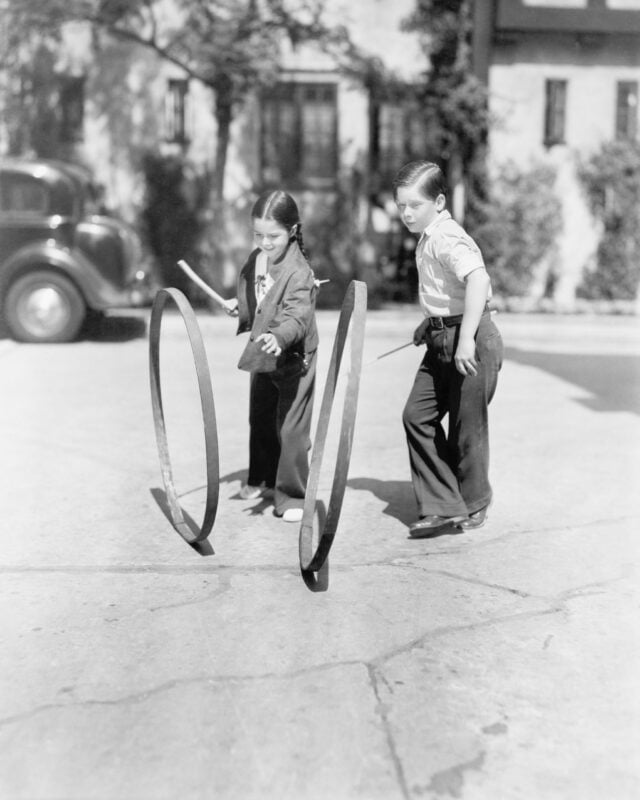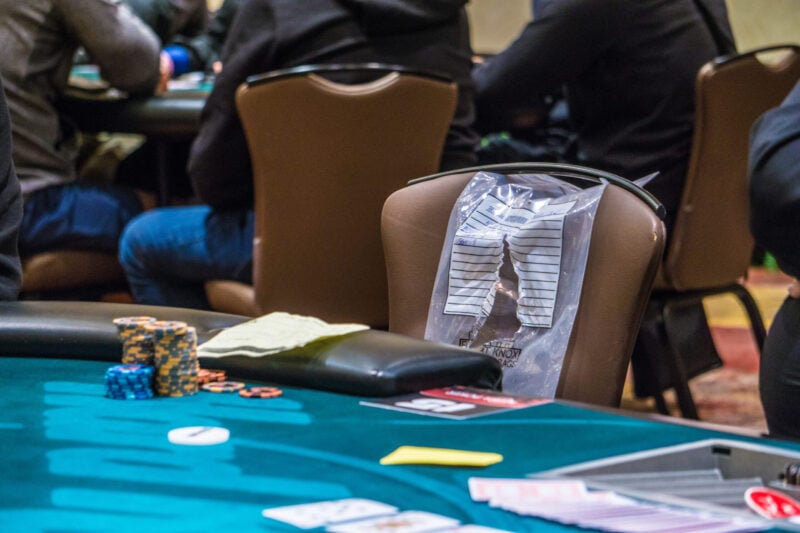In this episode of Bad Strategy Advice, I want to cover an important lesson that many more experienced players understand, but that the new generation seems to be missing: the importance of making your opponents play correctly.

As any gruff old grinder will tell you, you can’t beat a table full of crazy idiots. The more orderly and sensible the table is, the better. When people play wrong they get lucky, and you just can’t beat luck. The good news is that I pay attention when the old grinders talk, and they talk about this a lot. Using my notes from these conversations, I’ve compiled a number of ways to make sure that your opponents play correctly more often.
Forcing opponents to do the right thing
We’ll cover things like berating your opponents for bad play, explaining to them — in-depth — why they made a mistake, and teaching them to play better, in future articles. This article, however, is all about how you should play your own hand in order to force your opponent to do the right thing. But first, let’s look at why this concept is so important.
- Bad players get lucky. They can’t suck out if they get it in ahead, but when they get it in behind, they sure do get lucky a lot.
- When they do get lucky, you never see it coming. How many times have you paid off a terrible player with a hand they had no business playing, just because you never imagined they could call preflop with that trash? If they play better, they are more predictable and you don’t lose those huge pots so often.
- If they aren’t playing all kinds of crazy hands to the river, you don’t have to worry so much about being bluffed. I don’t know about you, but I hate being bluffed. The only solution, other than to call every time against these fools, is to make sure they know that a bluff won’t work and make them fold their trash hands.
- This style of play will keep the pots down to one or two players when you have a bigger hand. It’s much harder to win a pot with six callers, and with the Donkey-Buster strategy I will outline below, you won’t have that problem and will win most pots preflop.
- The turn and river are hard. If things get complicated, it may make your brain hurt and make it hard to concentrate on future hands. There’s a lot less thinking involved with my strategy.
GTO donkey-buster strategy
You’ve probably heard pros talk about equity and about keeping in hands that don’t have much of it. You might have heard that the new “solvers” often recommend much smaller bets to keep hands in the pot that have very little equity against you.
Well, those solvers don’t know how damned irritating it is to have some idiot show you six-four off-suit in a $400 pot on a Q J 7 5 3 board. I do. So listen to your old buddy Fox and ignore those math nerds and their GTO talk.
GTO, by the way, stands for Grantham Torbert Orrington, the man who invented the first solver back in 1906. It was a hand-cranked thing that churned out solutions once every 10 hours and broke down every hour-and-a-half. His second machine, the Steam Solver, was better, though it required six tons of coal to build up enough steam power for each hand it analyzed. The Steam Solver was too expensive to be worthwhile for the small stakes that ran back in those days when most games were played for buttons and marbles, and it never became very popular.

Anyway, here is how I’ve learned to make even the worst donkey play his hand the right way. I spent years taking notes when the old-timers talked, setting down this strategy before it was lost to the annals of history. It’s a language that is almost dead, an approach that even older folks have mostly abandoned. But I believe in doing things the right way, and sometimes that’s the old way.
The first thing you have to do is make sure your opponent knows that you have them beat. Sometimes it takes a hammer blow to the forehead to get the attention of a bad player, and if that’s what you have to do, then you do it. If you have the best hand, make sure they know it and that they will look foolish if they call. Shame is a powerful motivator, even for bad players, and knowing the whole table will see their bad play will often make them play better.
As an example, let’s say you make a flush on the turn with a hand like 6♠ 5♠ from the big blind. With a board of 9 9 2 3, and your opponent still betting, they probably have an over-pair in their hand. That means they have four cards that can beat you and make them a full house. Do you want to give them a chance to hit one of those four cards?
Hell no! You want them out of there. It’s your pot now and you should make sure you win it. So you bet the full pot, maybe more. You can even go all-in if that’s what it takes to push them out. We play poker to win pots, and the best way to make sure you win this one is to put a lot of chips in so they know you made your flush and get out.
Another example that I used to see a lot from the old-timers is a big hand preflop when you are first in. If you make a small raise from under the gun, everyone is gonna call you. Then, you have to take your big pair against five players. And those players know how tight you are, so they’ll try to crack your over-pair and win your whole stack.
And if you limp, they might limp along with you. You don’t want that. Because you are definitely going to put a bunch of money in the pot after the flop and you can’t beat the whole table with just one pair.
But, if you raise it up to 12 big blinds, you take all their options away. They can’t call because it’s too much money. And they can’t reraise either, because they know you have a big hand and will shove all-in. Their only option is to fold, just like they should. And that’s a win. Maybe it’s not a big win, but at least it’s not a loss.
After you make that big raise, you want to make sure to preserve your tight table image by showing those aces or kings. If your opponents know you’re only playing very strong hands in early position, they’ll stay out of your way.
Chase those draws out
If you’re playing an old-school strategy, draws are your enemy. You almost always have the best hand, and they are the ones drawing to beat you. If you don’t let them chase their draw, you can’t lose. And that’s why this strategy is so powerful — because it literally can’t lose.*
It also helps to fortify that table image you’ve worked so hard to build. Don’t just show your aces, show all your big winners, and tell the table when you sit down that you are a player who plays “the right way.” Then, they’ll know what you have, which gives you a big advantage and keeps you out of trouble. If you’re also following my previous advice about avoiding lucky bad players and mostly playing hands with stronger players, you’ll do just fine.**

“But what if I don’t have a really big hand? What do I do then, wise old sage?”
I’m glad you asked, imaginary person who helps me write my articles and thinks I’m a genius. You can still make sure they know what you have and prevent them from chasing with junk. You just bet smaller.
If you have ace-10 on a board like 10 9 9, you can bet half the pot or so, and if someone raises you, they either have a nine or they have a draw like queen-jack that was going to come in and beat you anyway, so you can fold. So as a basic rule, when you bet smaller, you are folding and when you bet bigger, you are willing to go all-in.
Once your opponents catch onto this portion of your strategy — and you can even tell them if you think they aren’t catching on quickly enough — they’ll play a lot better against you and stop chasing you down with junk.
Once everyone at a table starts playing better, with you showing them the way, poker works like a good blackjack table. Everyone plays the right way, and everyone wins.*** And that is how you beat a poker game.
So there you have it.
If you have a big hand, bet it big and chase out those weaker hands. If you have a middling hand, bet smaller and fold if they raise. And if you have nothing, either bluff small or just wait your turn and let the proper winner have the pot. That’s what old GTO learned from the Steam Solver. It’s tried and true, time-tested, and foolproof. Not like this wild stuff the kids are calling GTO when they’ve never adjusted a check-raise frequency valve to nine pounds of steam pressure in their whole life.
*Strategy not guaranteed to yield positive results. No poker strategy always wins, and this one almost never does. Use at your own risk, and only if you hate money.
**Again, this is really terrible advice. Don’t do this. It’s very stupid.
***I shouldn’t have to say this, but there are no guarantees at blackjack either, and getting everyone to play “correctly” doesn’t help your odds at all. If you berate me for taking the dealer’s bust card I will fight you immediately.


